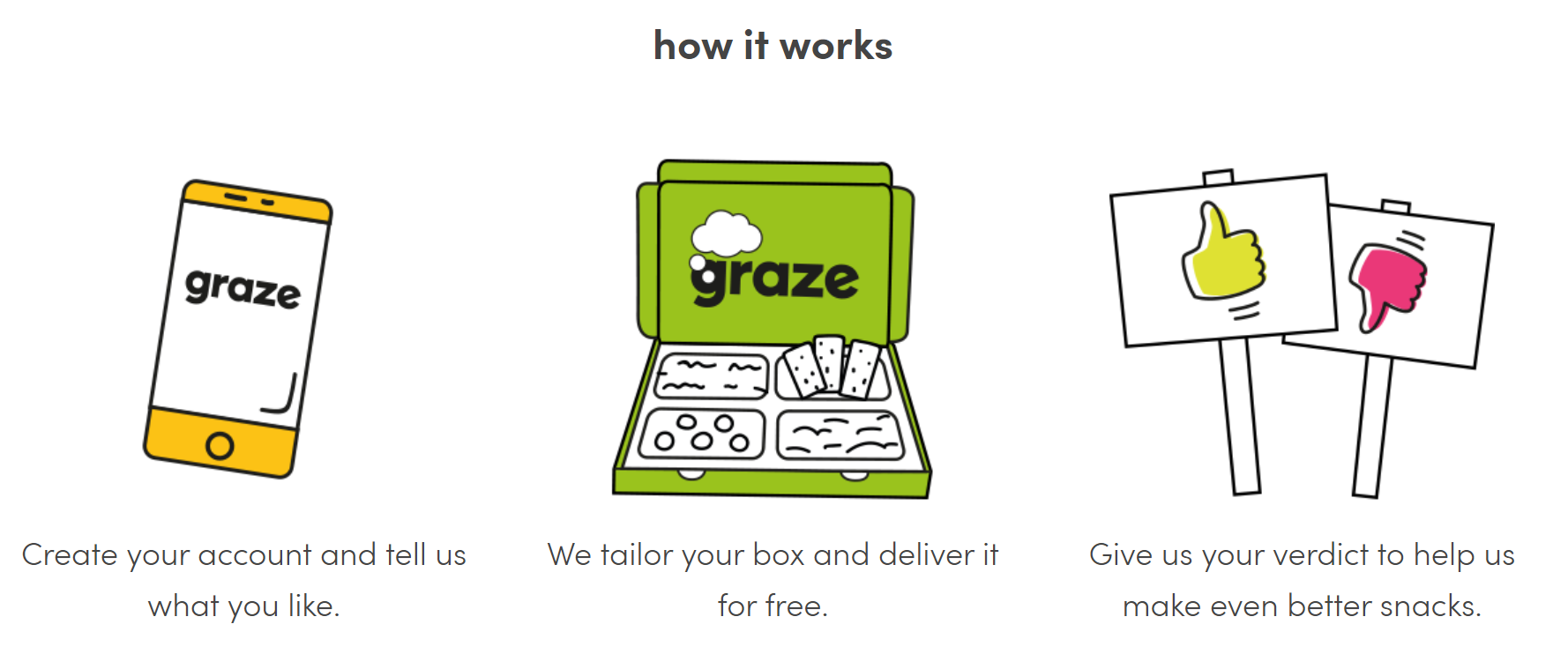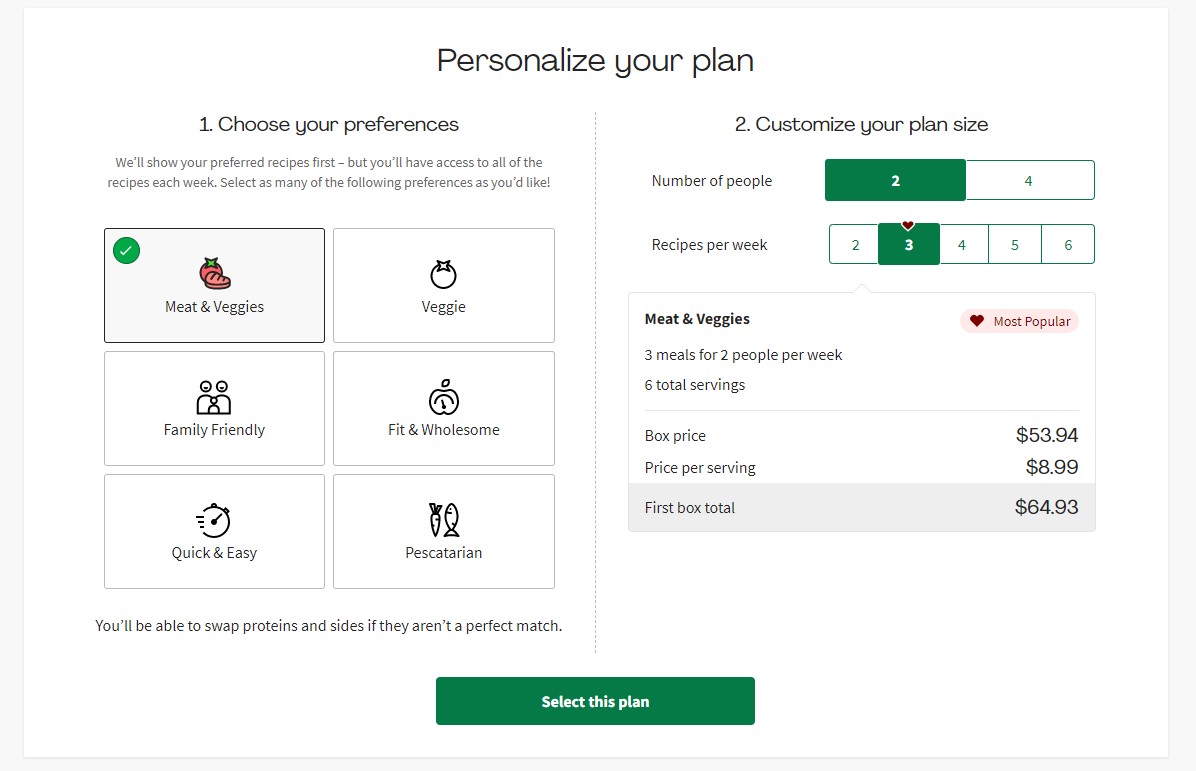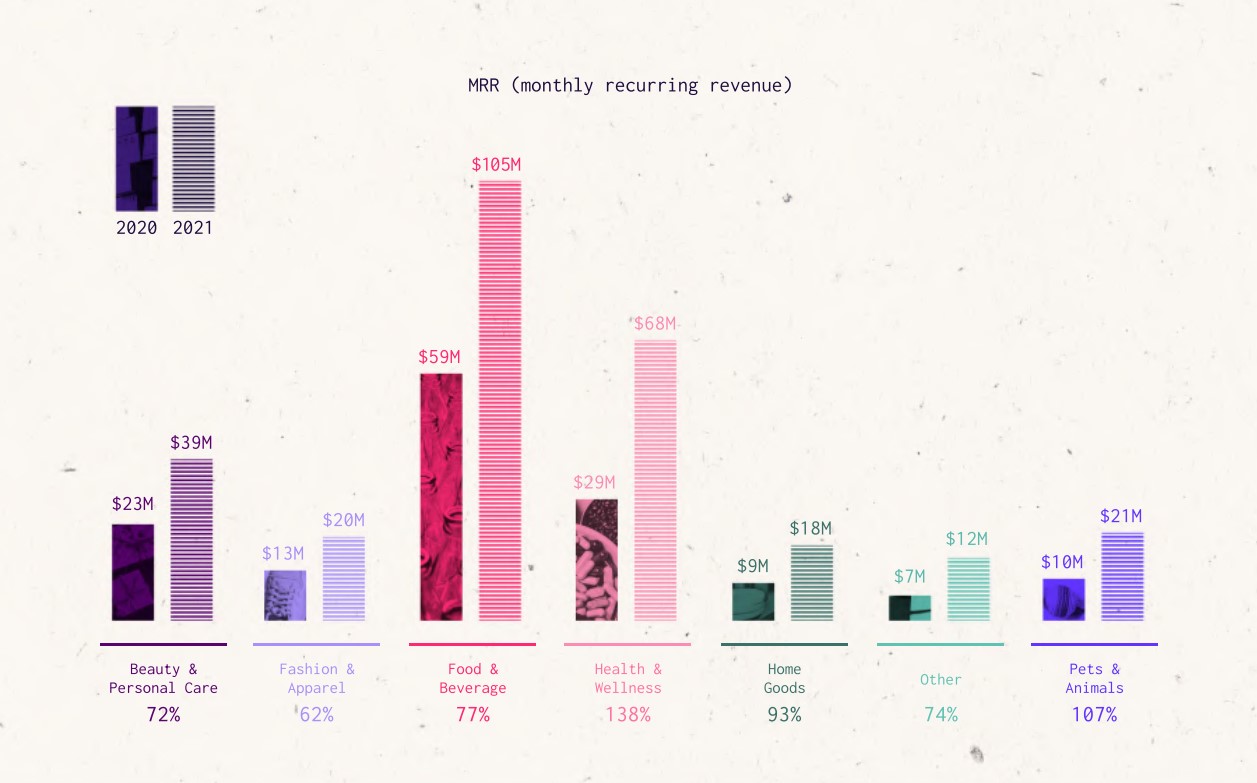Subscription Ecommerce: What are the Benefits for You and Your Customers?
There’s no denying the meteoric rise of the subscription based business model. Subscriptions present a whole host of benefits for business and for customers, making them an attractive proposition in the modern ecommerce market. Let’s take a look at some of those benefits in more detail.
Written By
Hannah Smiddy

[Editor’s note: this article has been updated for 2023]
Today, the subscription ecommerce market was estimated to have hit upwards of $120.04 billion by the end of 2022. And this is a market that continues to grow rapidly. In 2018, subscription ecommerce sales stood at around $10 billion. – that’s some incredible growth in just five years!
From beauty products to biscuits, razors to recipes, there’s a subscription service for pretty much anything you can think of. But why is the subscription based business model so popular?
Today we’ll explore this question, and take a look at some of the biggest benefits of subscription ecommerce, for both your business and your customers.
But first, let’s define what subscription ecommerce is.
What is a subscription model?
Subscription ecommerce is a business model in which customers make regular payments to receive products or services at recurring intervals.
The three main types of subscription model are:
Subscription boxes / curation – This is one of the most popular subscription model, well suited to the food and beverage vertical. Subscribers receive a selection of unique and interesting items on a regular basis, usually tailored to their personal tastes. Often, they don’t know exactly what will arrive in their subscription box, which adds an element of surprise to increase appeal. Examples of subscription box services include Swanky clients such as HelloFresh who sells recipe kits, Union Roasted selling coffee subscriptions and LiquorLoot selling gin and whiskey boxes.
Repeat purchases / replenishment – With this type of subscription service, consumers can automate the purchase of commodity items such as grooming products or health supplements thereby saving them time and money. Some examples include Swanky clients YuMOVE and Wilkinson Sword. The health and wellness vertical in particular is growing rapidly in this type of subscription, with monthly recurring revenue increasing by 138% between 2021 and 2022.
Image source: State of Subscription Commerce report by Recharge.
Access models – Access subscribers pay a regular fee to obtain exclusive discounts or member-only perks. Companies with this type of subscription model include JustFab and NatureBox.
Research by McKinsey shows that subscription ecommerce services are most popular among young, wealthier populations living in urban environments.
Benefits of a subscription model for your business
#1 Increased return on customer acquisition costs
For subscription services, your customers’ repeat business is implied at the time of purchase. Providing you keep your subscribers happy, this type of model ensures a consistent source of recurring revenue from repeat customers.
The longer a subscriber stays loyal to your brand, the higher your retention rates and the greater their customer lifetime value (CLTV). This means you’re getting much better value for money when it comes to acquisition spends, which is great news for your profit margins. For more ideas on this topic, head to our article: How to Reduce Customer Acquisition Cost.
#2 Lower retention spend
Of course, another benefit of having your customers automatically ‘buying’ from you on a regular basis is that there’s less need to target them with extensive remarketing. Subscribers who are committed to regular payments are less likely to churn, which means you don’t have to eat away at your budget with retention marketing.
#3 Better financial forecasting
A huge benefit of a subscription-based business model is that you can accurately and reliably predict your business’ revenue stream. You should be able to go into each month which a clear idea of how much profit you can expect, whereas regular ecommerce retailers can face huge monthly and seasonal fluctuations.
Of course, customers may decide to cancel a subscription without warning, but for the most part, financial forecasting is much easier with a subscription model.
Having a better grasp on your financial forecast can help you to make better business decisions. It’s particularly useful when it comes to setting marketing budgets, for instance. Having a predictable cash flow like this can be particularly attractive to investors as well.
#4 Better inventory management
With a traditional ecommerce business model, knowing how much inventory you need in order to maximise profit and minimise waste can be quite the conundrum – and a costly one at that.
However, when it comes to subscription ecommerce, inventory management is a whole new ballgame.
As a subscription retailer, you know how many subscribers you have and how much stock you need. There’s less risk of unpredictable demand on your fulfilment. As a result, you can anticipate demand and supply with confidence, helping to make your business processes much more consistent.
Merchants can manage and plan for a suitable level of inventory well ahead of time. You can place orders with suppliers and delivery services in advance, possibly even obtaining a discount or ‘early bird’ rates.
#5 Opportunities for better relationships with customers
Subscription ecommerce opens up opportunities to engage with customers on a regular basis across a range of channels. This is a valuable opportunity for merchants to build rich conversational relationships with customers.
Subscription retailers can use the comprehensive understanding they have of their customers’ preferences and usage behaviours to serve personalised content. Merchants can tailor messaging, recommendations and ads to each individual subscriber, providing a personal, memorable experience that fosters loyalty and engagement. Find out some ways to personalise your customer journey in our article on 15 ecommerce personalisation examples.
What’s more, building a strong relationship with customers makes it easier to promote upsell and cross-sell offers. The bond of trust that’s developed over the course of the subscription means that subscribers are often more receptive to any additional and complementary services that you promote to them.
#6 Faster feedback loop
With a constant flow of regular orders, subscription retailers can continuously gather feedback from customers. They’ll become aware of any issues more quickly, enabling them to tackle problems as they arise.
The best subscription businesses will learn from the feedback they receive and use it to provide even better products. Not only will this encourage your existing customers to stay loyal, it’s a great way to improve your reputation and attract new subscribers.

Subscription snack box service graze proactively asks for feedback so it can improve its offering.
#7 Amplified brand awareness
For subscribers, receiving their regular product or service is something they look forward to every month. There’s often a build-up of anticipation before receiving subscription packages, particularly if it’s a curated box with surprise items.
The subscription becomes something they want to shout about to their friends and family. With regular subscription packages, recommendations are fast and frequent – great news for raising your profile.
Often, people will also share pictures of the contents of their subscription box on social media, spreading the word about your brand to their followers and beyond. Indeed, unboxing videos have taken YouTube and Instagram by storm in recent years. This is a great way to raise awareness of your brand and build your subscription base without the skyhigh acquisition costs!
Benefits of subscriptions for your customers
Subscription isn’t only great for your business, it’s convenient for your customers as well. Be sure to sell the advantages of your subscription service to encourage more sign-ups, and avoid common mistakes on your subscription flow.
#1 Convenience
For customers, subscriptions represent the ultimate in convenience. Subscribers receive something they need or want on a regular basis, direct to their door – it just turns up without having to place repeat orders. This is perfect for the modern, time-poor consumer.
#2 Personalised experience
Increasingly, shoppers are demanding personalised ecommerce experiences tailored to their individual needs. In fact, 63% of consumers expect personalisation as standard.
As we mentioned earlier, subscription ecommerce can help satiate this compelling desire that consumers have for personalisation. In particular, curation-based subscriptions enable merchants to deliver an intricately tailored customer experience. When a customer receives their monthly box of goodies that has been curated with their personal tastes and needs in mind, they feel understood, valued and connected.

Mealkit masterminds HelloFresh allows customers to select their food preferences in advance before offering them a curated range of recipes with each delivery.
These benefits to the consumer translate into significant commercial benefits for your business. You should see an increase in engagement, loyalty and overall customer satisfaction, which drives retention and increases return on customer acquisition costs.
#3 Assists with budgeting
A subscription also allows for easy budgeting. Having a set amount of money taken at regular intervals helps consumers stick to their monthly budget and monitor their outgoings more efficiently.
Plus, ‘Subscribe & Save’ options enable consumers to save money – a very popular benefit!
#4 Discoverability of new and unique products
Often, subscription boxes feature samples of new products that the consumer hasn’t tried before. Subscribers get to embrace new products without the permanence of spending money on that specific item, which is one of the main attractions of a subscription.

Here, haircare brand Boucleme neatly summarises the customer benefits of their subscription service: personalisation, convenience and flexibility.
The challenges of a subscription model
Of course, a subscription based business model does present challenges to retailers. Here’s a few that you might want to consider:
- Subscription fatigue – Subscribers could become bored of the products, which means merchants need to work hard to maintain interest.
- Difficult customer acquisition – New customers are asked to make a commitment to regular spending, as opposed to a one-off purchase. This can make sign-ups harder to establish.
- Credit card expiration – Subscription billing can be more vulnerable to changes in payment details, such as card expirations. Luckily, modern subscription platforms like Recharge allow customer credit cards to be updated automatically.
Subscription ecommerce on Shopify
At Swanky, subscription ecommerce is an area we know inside out. With extensive expertise in Food and Beverage subscriptions, Health and Wellness subscriptions, and Beauty and Grooming subscriptions, we know the tricks and tips to building a successful subscription store.
We partner with Recharge, the go-to platform for merchants looking to launch and scale their ecommerce subscription business.
Merchants can sell and manage repeat orders in an all-in-one platform that integrates seamlessly with Shopify. ReCharge’s ‘subscribe and save’ product page option allows the transformation of one-time products into monthly subscriptions, whilst the customer portal lets customers fully manage all aspects of their subscriptions directly from the store.
Want to know more?
Do you have an online subscription business that needs a bit of a makeover? Get in touch with our friendly team of Shopify Plus Experts today to find out more about how we can help you unlock your ecommerce potential!


